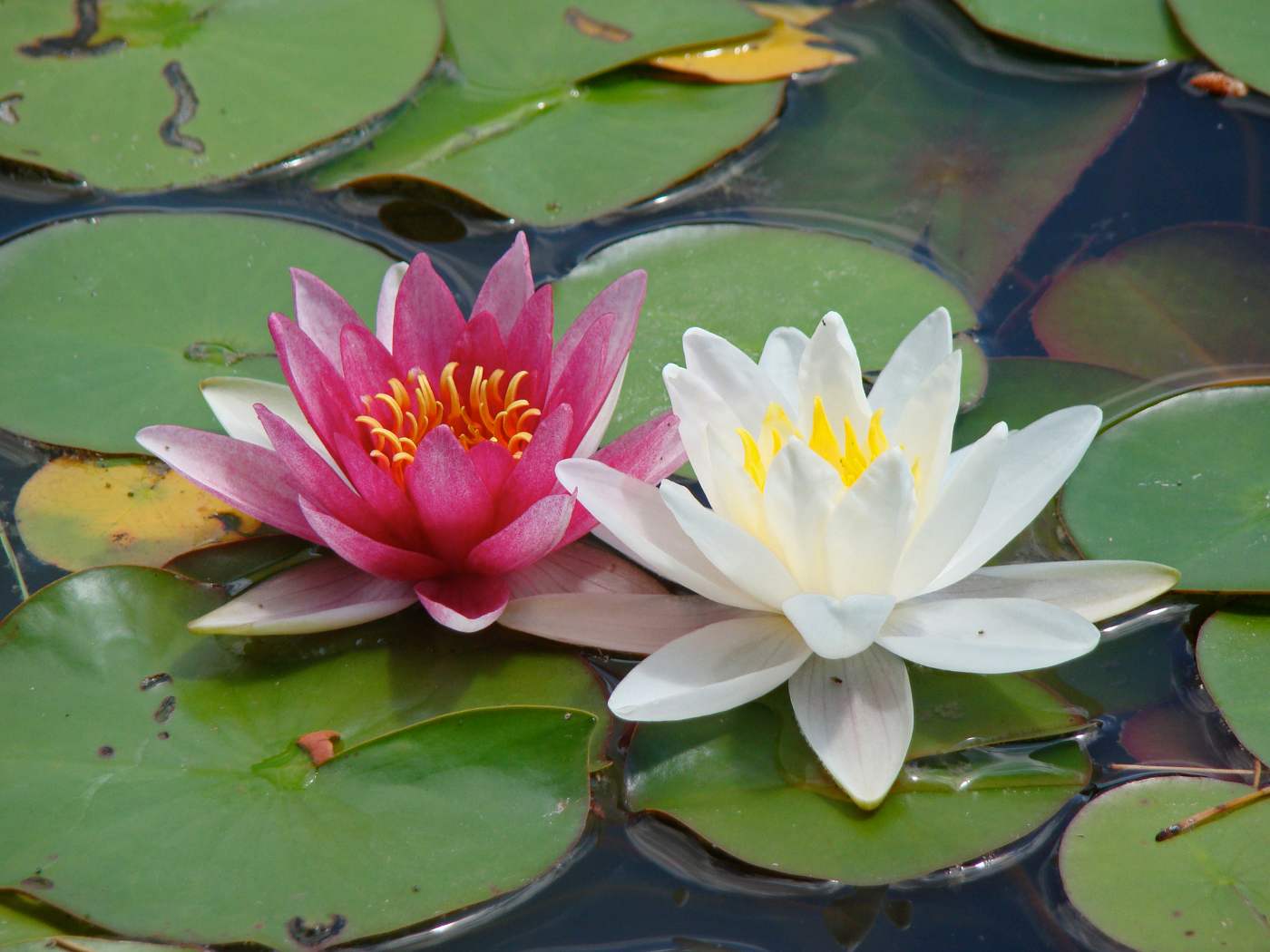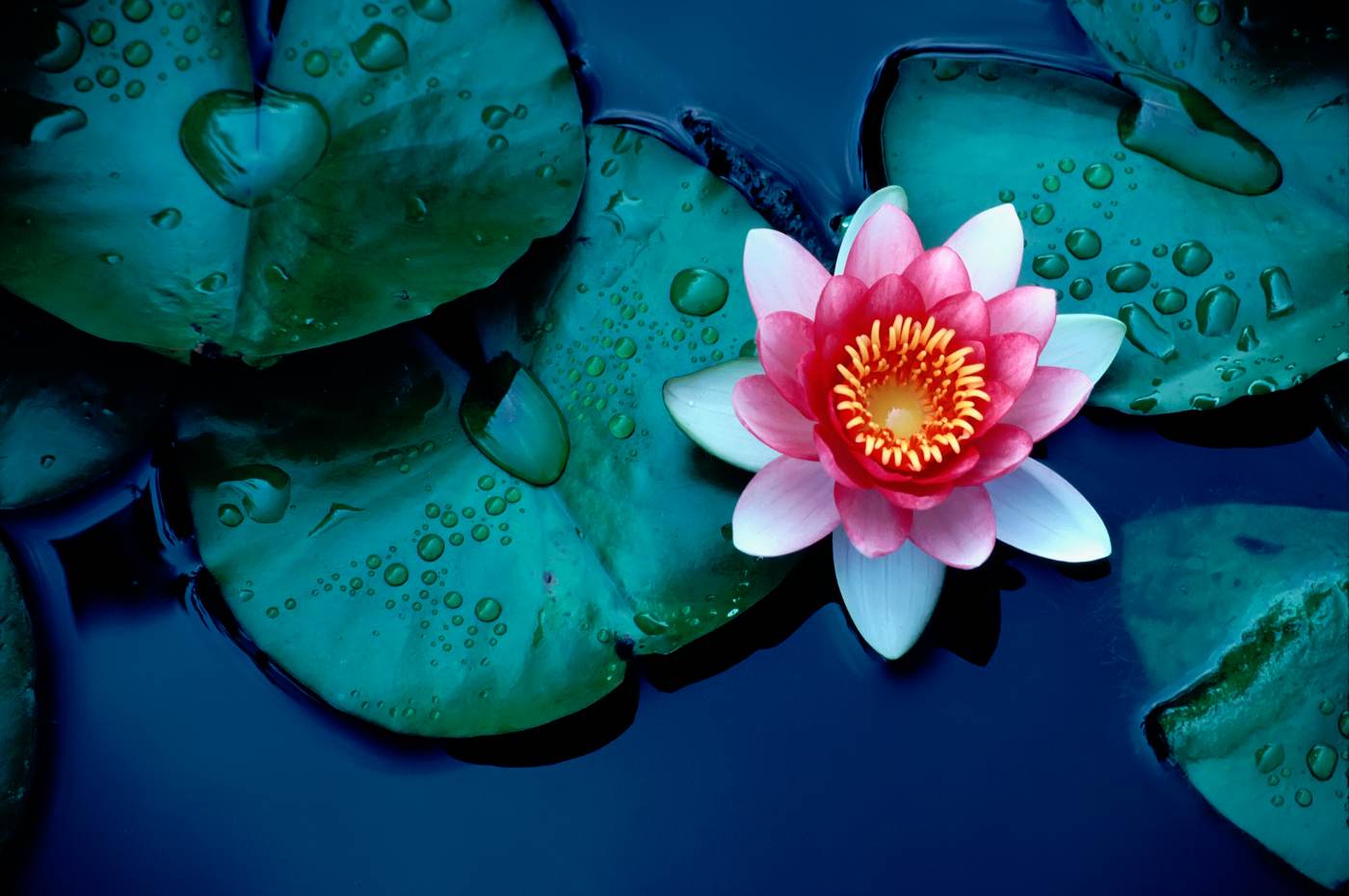In upper-class estates around the world, water gardens have always been a luxurious highlight, and the highlight of those gardens is undoubtedly the water lily. Water lilies are elegant, exotic and timeless, and add an artistic charm to even the humblest backyard pond.
This post will introduce you to the water lily—how to choose one, how to plant one and how to care for it. You might be surprised by just how easy they are to have around, so let’s get started.
Choosing a Water Lily
There are over 60 species of water lily to choose from, all delightful in their own ways. They grow in a range of hues, from subtle whites and pastel shades to deep, vibrant pops of colour. Their flowers can be quite large and are often beautifully fragrant.
There are two kinds of water lilies: hardy and tropical. Hardy water lilies are perennials, and although their leaves and flowers will die off, the roots will survive, provided they don’t freeze. Tropical water lilies, on the other hand, are treated as annuals.
In addition to choosing the colour and type you prefer, with water lilies, you’ll also want to consider bloom time. Some species are night bloomers, opening at dusk and closing again mid-morning. Day bloomers open early but typically close around midday.
Here are a few of our favourites:
American White Water Lily (Nymphaea odorata)
These classic beauties feature large, fragrant white or pink flowers that can reach 8 inches wide. Flowers sit on the surface of the water, and bloom from March to October. Their leaves have the iconic lily pad shape, with pointed lobes and bright green surfaces.
These lilies are native to the northeastern U.S. and Canada, so they tolerate cold well and are hardy from Zones 4-11. They’re perfect for naturalizing a pond, and their seeds offer a food source for ducks.
American white water lilies open early in the morning, but close by noon, which is an especial treat for those who like to spend their mornings with a coffee in the garden.
Colorado Water Lily (Nymphaea ‘Colorado’)
With its warm, salmon-coloured flowers, the Colorado water lily adds a touch of colour without being overstated. ‘Colorado’ is hardy from Zones 4-10, and also more tolerant of shade and smaller spaces than many other varieties.
This lily holds its flowers above the water, with a full, lush look that’s reminiscent of more tropical varieties. The pads start off with burgundy variegation but turn green as they mature, offering a little interest to the pond. This lily has a long bloom season, flowering from spring right through to fall.
Nymphaea ‘Leopardess’
This is a bold water lily that will turn heads with its flowers and with its foliage. ‘Leopardess’ is a vivid blue with a contrasting yellow centre, and its leaves are just as dramatic, with variegated foliage in greens and purples.
‘Leopardess’ blooms from mid-summer into the early fall. It’s a day bloomer, which only seems fair given how beautiful its blooms are. It’s also a tropical plant, however, so for most of us, its beauty will seem short-lived.
Yellow Water Lily (Nymphaea Mexicana)
Also known as the Mexican water lily, this plant offers star-shaped flowers and smooth oval leaves, similar to the American white water lily. It also features the same long bloom time, flowering from March into October.
The buttery yellow of this flower, however, opens at midday and stays open until late afternoon, making it a lovely companion for the white water lily.
Native to the southern United States, it tolerates more sun than the American white water lily. It’s still hardy in Zones 5-11, though, so you needn’t live in the southern U.S. to enjoy it.
Some lilies are a little more uncommon but you might be able to order them online from a specialty shop.
How to Plant a Water Lily
Lilies prefer still waters, so avoid planting your lily near fountains or currents.
Also ensure that your lilies have a peaceful environment where they’re unlikely to be disturbed. Dogs that play in ponds, for instance, can wreak havoc on lilies—be sure to keep four-legged friends away.
Most experts will suggest planting water lilies in containers, not just because it’s easier, but because they have a tendency to spread. Containers submerged into ponds ensure that you can have several species that will peacefully coexist. You can also keep containers on the patio like a mini-water garden.
To plant in containers, fill large, wide pots with a heavier soil (like clay, silt or loam). Avoid light potting soils or any soil with perlite, which won’t stay once the container is under water.
Water lilies are grown from rhizomes, meaning you’ll need to plant them with the tip facing up, at about a 45-degree angle to the pot’s sides. Cover the soil with pebbles or a layer of gravel to keep the soil of the pot intact as you submerge it into the water of the pond or patio container.
Read your plant’s specific care instructions to determine how deep the container should be placed. If your pond is deep, you can place the container on rocks or sink a ledge of some kind to keep the lilies at the right depth.
How to Care for a Water Lily
Water lilies are incredibly easy to care for once they have the right environment. Water lilies need full sun to bloom well, so plant yours in a section of your pond or water garden that gets at least 6 hours of direct sunlight.
Read up on your lily’s preferred water temperatures—tropical water lilies typically need a water temperature of at least 70 degrees F to thrive.
If you want larger species, make sure you have ample room for them—some species spread up to 20 feet and can crowd out competitors. That said, smaller species of lilies often do well in small containers.
To propagate your water lily, simply divide the roots. Section off the rhizomes of the plant into 2-3-inch lengths. Place them in damp soil and cover with gravel to make sure the rhizomes don’t float to the top. Then submerge in a wide container to a depth of 3-4 inches. When leaves sprout, they’re ready to relocate.
Water lilies really are just that simple to care for, so consider adding them to your backyard for a touch of something luxurious. If you check out our 67 Captivating Quotes About Lilies, you may find yourself even more inspired to get a lily of your own.
Images: Depositphotos


